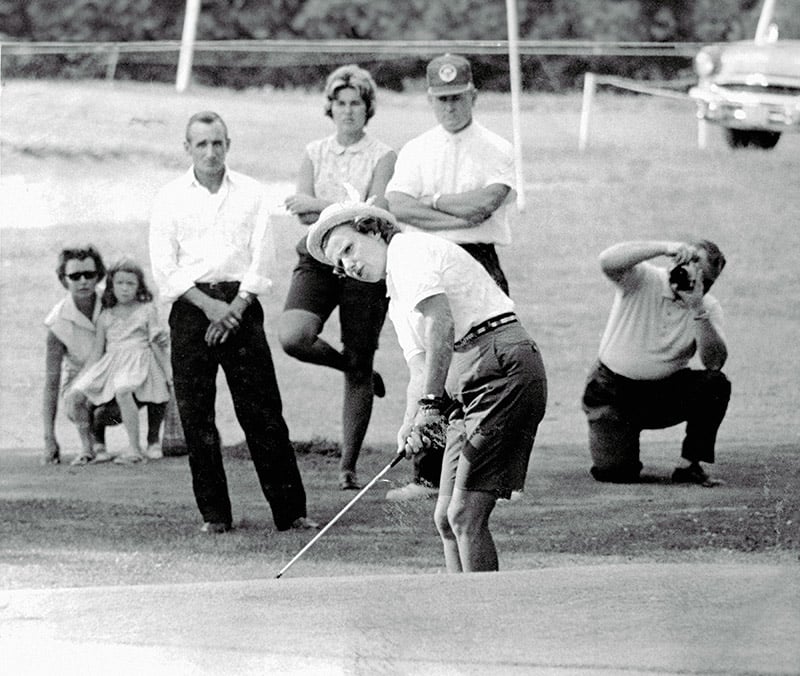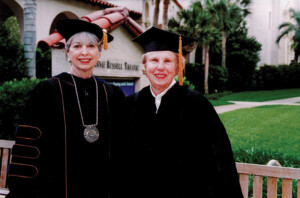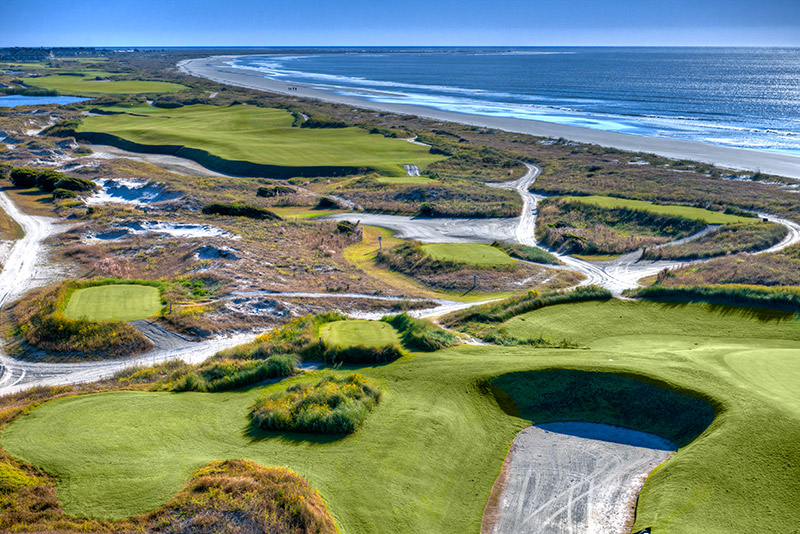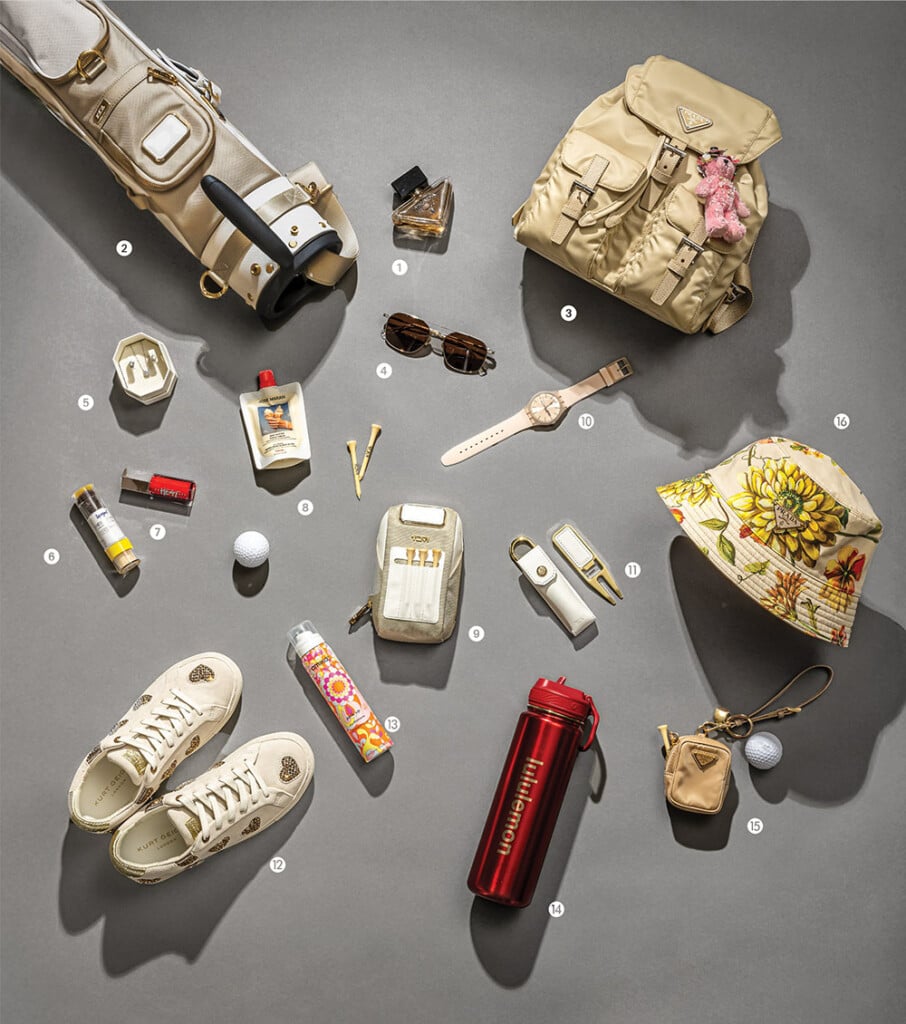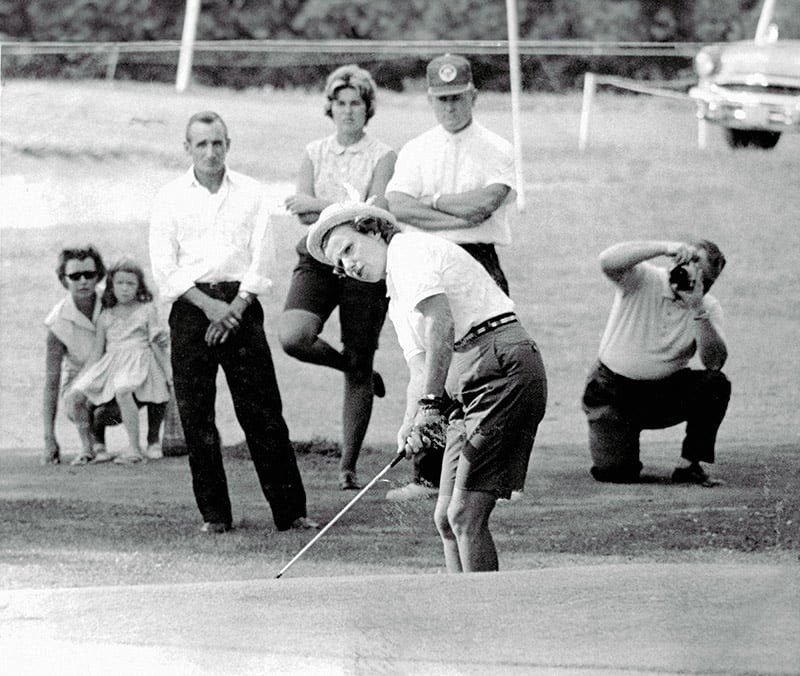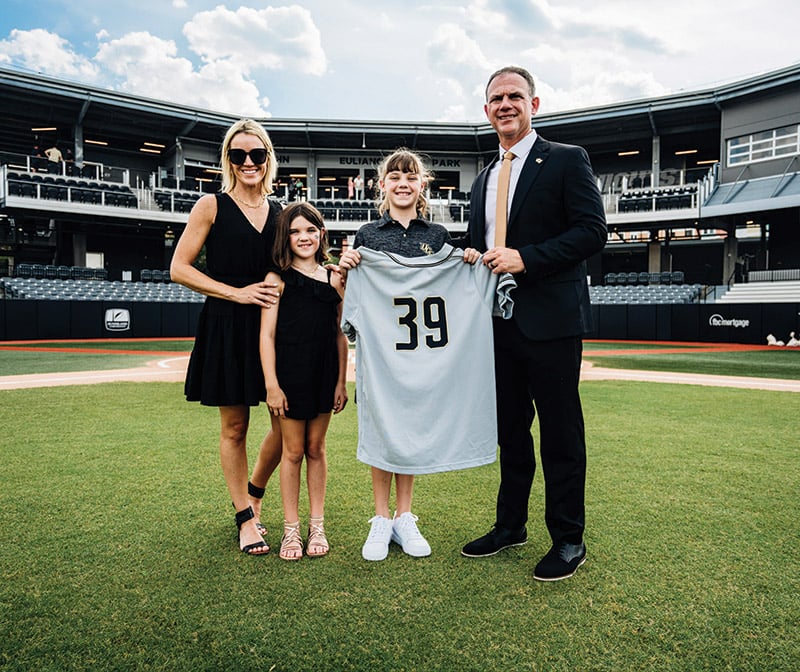Alice Dye Is The First Lady Of Golf Architecture
A talented golfer and designer, Alice Dye is behind some of golf’s legendary holes. Learn more about her connection to Florida and her contributions to the golf world.
EVERY GOLF ENTHUSIAST is familiar with the work of Pete Dye, a creative genius who some consider to be the G.O.A.T. when it comes to golf architecture. But, as the saying goes, “behind every great man is a great woman,” and that is certainly the case with Alice Dye, his wife and partner, who had some serious chops of her own. Growing up on the outskirts of Indianapolis, Alice O’Neal was introduced to outdoor pursuits by her parents and first tried her hand at golf at the Woodstock Country Club. She quickly excelled, and entered her first competition, the 1942 Indiana State Girls Junior Championship. She won by a single stroke. This would be the beginning of an illustrious amateur career. A year later, when she competed in the Women’s Western Golf Tournament, Alice met professional golfer Peggy Kirk Bell, a recent graduate of Rollins College, who told the young golfer about Rollins’ golf team. In 1944, Alice enrolled as a freshman and a member of the team.
Under Alice’s watch, the Rollins team made headlines—she took the team to its first two national championships. While captain of the women’s golf team (she also played on the men’s team), Alice met Pete Dye; the two married after graduation.
It was a different era when Alice played on the Rollins golf team, says Julie Garner, director of golf and head coach of the women’s golf team at Rollins College. “When she was a student here, there really wasn’t an organized women’s golf team per se. Some of the better women players who attended Rollins played with the men and occasionally competed in home matches, but rarely traveled.”
In the book “Crooked Stick Golf Club: A story of the original masterpiece from America’s first couple of golf, Pete and Alice Dye,” Alice told author Chris Wirthwein, “There were no ‘national’ sports in those days—and no LPGA. Even the PGA was small at the time. But amateur golf was big news. Why, I had bigger headlines than Tiger Woods!” Alice was inducted into the Rollins Hall of Fame in 1981 and received the honor in person. “She is one of our legendary alumnae,” says Garner. “I think her attendance at Rollins encouraged other great amateurs to enroll here.”
After college, Alice and Pete moved back to her native Indianapolis, and continued to pursue golf careers, although their passion lied in the design and maintenance of golf courses. They married in 1950. It wasn’t long before Alice and Pete devoted themselves to golf course design full time. On a trip to Scotland in 1963, when Pete competed in the British Amateur at The Old Course, the Dyes played more than 30 courses, taking notes and photographs. It was a harbinger of courses soon to come. While Pete focused on the initial design, agronomy and layout of a course, Alice made it her mission to make the courses accessible to all players, no matter their gender or age. “She was a vociferous advocate for golf courses providing forward tees for women, juniors and novice players,” says Garner. “She was constantly in Pete’s ear to make sure he was mindful of the placement of forward tees.”
Forward tees are a set of golf tees placed in front of regular tees on a golf course that are used by golfers who want a shorter distance to the hole and can make the game more enjoyable for golfers who have slower swing speeds. Alice also developed a chart and video suggesting yardages and positions for her “two tee system for women,” one the many accomplishments that led to her becoming the fi rst female member (in 1983) and the first female president (in 1997) of the American Society of Golf Course Architects. She also co-wrote the book “From Birdies to Bunkers: Discover How Golf Can Bring Love, Humor and Success into Your Life.” “She was breaking barriers at a young age,” says P.B. Dye, son of Alice and Pete. “When she was six or seven, little girls weren’t supposed to be playing golf, they were supposed to be playing tennis. But she played golf with her father. She’d been a scratch player since she was 16 years old until well past 60.”
When it came to golf course design, though, she was her husband’s biggest critic. “When my mom showed up on a golf course, she was looking at it strictly from a player’s standpoint,” he says. “She was a purist. She played the game for the love of the game.” Early on Alice was involved in the initial planning, says P.B., but being a stay-at-home mom, coupled with being an amateur player, she couldn’t spend 100 days on a golf course as his father often did. But the case of Crooked Stick Golf Course was another story. It was Alice and Pete’s passion project, and the couple was two of the Carmel, Ind. course’s founding members. At a 1964 meeting at which the club was proposed, it was described as “a haven far removed from urgency and conflict, where golfers can enjoy the quieter pleasures of their game in seclusion and peace.”
Before Crooked Stick opened in 1967, membership was limited to 200 people. Today, the course still maintains a limited membership: it is by invitation only. Crooked Stick’s championship legacy dates to 1971, when it hosted the U.S. Open qualifier. It hosts the Pete & Alice Dye Junior Invitational annually. The Dye legacy also lives on in a statue near the 18th hole. Alice Dye passed away on Feb. 1, 2019, at the age of 91. She won the Indiana Women’s Golf Association Amateur Championship nine times and in all won 50 amateur golf championships. In addition to the Rollins Hall of Fame, she was inducted into the Indiana Hall of Fame, the Florida State Golf Association Hall of Fame, received The Heritage of Indianapolis Award, the Don Rossi Award for Lifetime Contributions to Golf, the Women’s Western Golf Association’s Woman of Distinction Award and the PGA of America’s 2004 First Lady of Golf Award. “Her work (with Pete) in golf course design lives on all over the U.S., and the world,” says Garner.
ALICE DYE’S COURSE HIGHLIGHTS, ACCORDING TO THE AMERICAN SOCIETY OF GOLF ARCHITECTS
TPC Sawgrass, Ponte Vedra Beach, Florida
“The infamous 17th hole at TPC Sawgrass was her idea, to make it an island green,” says Garner.
Whistling Straits Golf Club, Kohler, Wisconsin
This course hugs the rugged coastline of Lake Michigan. And at Alice’s suggestion, the long par 3 on the 17th hole, regarded as “the fear factor,” butts up against the lake.
PGA West (Stadium Course), La Quinta, California
A course noted as supremely playable for all skill levels, the Stadium Course is a great example of Alice’s forward-tee system.
The Ocean Course, Kiawah Island, South Carolina
The course boasts the most sea- side holes (10) in the Northern Hemisphere. Although it was originally planned to sit behind a stretch of sand dunes, Alice suggested raising the entire course to give players unobstructed ocean views—but in exchange, exposed them to the erratic breezes of the Atlantic.
